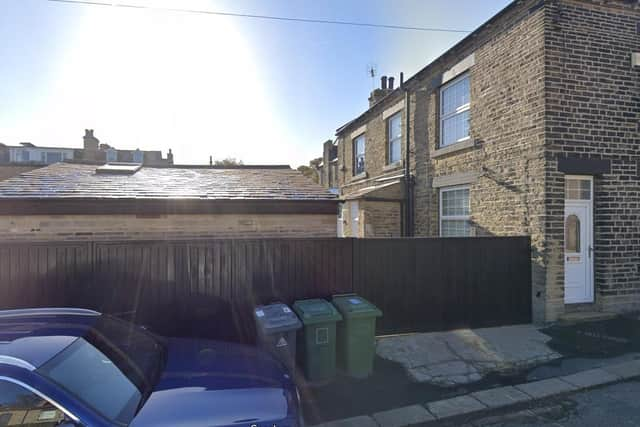Owners of Victorian house in Yorkshire Conservation Area ordered to demolish extension that was built without planning permission
Businesswoman Sajeeda Ibrahim has lost an appeal against an enforcement notice issued by Kirklees Council last year about her property, Kelvin Villa on Newsome Street within the Northfields Conservation Area.
The single-storey side extension with front-projecting element was built without consent, and an application for alterations to an existing conservatory to form an enclosed room was refused.
Advertisement
Hide AdAdvertisement
Hide AdThe work was described as ‘an incongruous development out of character with the main house’ due to its height, roof design and use of render.


She was ordered to remove the additions within 90 days, but this requirement was stayed while she awaited the outcome of her appeal to HM Planning Inspectorate.
However, in a ruling published on January 8, the government planning inspector found in the council’s favour, although Mrs Ibrahim has been granted 12 months to undertake the demolition rather than 90 days.
Planning inspector Graeme Robbie’s report read: “From the photographic evidence supplied, although the previous conservatory was a somewhat incongruous addition to the property, the L-shaped range to which it was added was more in keeping with the character and appearance of the main house. It is evident from the appellant’s submissions however that the combination of these built additions had experienced significant damage and degradation from, amongst other factors, water ingress and damp over time leading, ultimately it would seem, to their partial collapse during repair works. The collapse also appeared to include the majority of its rear wall abutting the adjacent rear lane.
Advertisement
Hide AdAdvertisement
Hide Ad"The new extension broadly takes the cumulative footprint area of these structures. As a consequence, it too projects forward of the main building’sfront elevation. However, unlike the old structures, the appeal extension is a single structure. As such, it loses the subtlety of the smaller and more modest individual elements of the previous structures and their incremental cumulative impacts in terms of footprint area and scale, and heights.
"Moreover, the rendered walls, significant height above door and window openings on its front and return elevations and its flat roof and angular parapetwalls give it a bulky and somewhat cumbersome appearance. The appellant may be correct, in part at least, in stating that the height of the building wouldremain the same as previously. However, while the appeal extension might not exceed the height of the previous structures, at their comparative highestpoints, it is a taller and bulkier extension in overall terms, with its front and side elevations much higher than those of the previous structures. As such, itlooks a much larger and bulkier extension and, unlike the incremental additions to the property that it replaced, its width relative to that of the main housegives it a more dominant presence at the side of the house. In this sense, the extension fails to read as a subservient addition to the property and isincongruously unsympathetic to the scale, character and appearance of the main house.
"What has been built has a more strident and dominant presence at the side of the house than that previously and, in its own right, fails to respect the scale and form of the host building. As such, it relates poorly to the main house in terms of its siting and positioning, scale and appearance.
"I have considered carefully the appellant’s point that the Council, in previously considering the application for planning permission for the retention of the extension, concluded that the extension had a neutral effect on the character and appearance of the Northfields Conservation Area, yet in respect of the appeal now conclude that it would neither preserve nor enhance the character or appearance of the CA. Whilst it is clear that this is a matter of frustration to the appellant, and is a matter with which I have some sympathy, I am nevertheless obliged to consider the Council’s case as it is made in respect of the matters at appeal, namely the notice and not the previously refused application for planning permission.
Advertisement
Hide AdAdvertisement
Hide Ad"I have considerable sympathy for the appellant’s frustrations with the apparent length of time it took the Council to determine the previous application forplanning permission. However, neither these experiences nor the appellant’s concerns regarding wider issues surrounding the Council are matters to which I give weight to."
Mrs Ibrahim’s agent had previously argued that it would be difficult to find a builder to remove the extension within 90 days.
Comment Guidelines
National World encourages reader discussion on our stories. User feedback, insights and back-and-forth exchanges add a rich layer of context to reporting. Please review our Community Guidelines before commenting.
